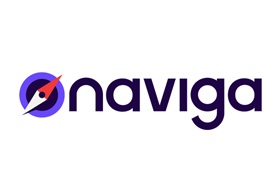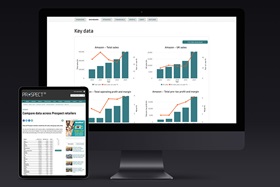Graeme used the work undertaken for two of Abacus’ clients – BD (previously called Building Design) and IFR (International Financing Review) – to illustrate both the issues which need to be considered, and Abacus’ approach to the design challenges.
BDonline
BD is the UK’s best-read weekly magazine for architects. It provides insight into the people, issues and stories affecting the industry, as well as being a showcase for the latest architectural projects. It has a unique, vibrant and buzzy standalone brand.
The website redesign was undertaken to coincide with a print relaunch and branding shift, which included a change of name from Building Design to BD. It was recognised that the magazine had a design conscious audience, and that vibrant imagery was key to showcasing the various building projects depicted in BD. The website needed to offer much more than weekly content online by developing a strong community look and feel.
A principal challenge for the design team at Abacus was the close link between the print and website redesign. The projects were being run in parallel, which meant that the website designer had to work very closely with the editorial team and the magazine designers to ensure that the website used the same visual language as the print product. As is the case in many projects of this kind, the print redesign kept evolving – and the website design had to reflect these changes. The website design also needed to allow space for the editorial team to reflect the brand’s individual personality.
Creating initial impact: the logo and masthead
In the print design, a strong new logo and masthead, using vibrant colours, have a strong and immediate impact. In the web design, the same look and feel for the logo and masthead are employed. However, a large part of the key ‘real estate’ of the home page was given over to creating a deep masthead – for even more online impact. This was complemented by a three-panel style to reflect the brand personality, and space for an advertising leaderboard.
Showcasing imagery
One of the main design challenges was to ensure that the dynamic story pages worked equally well with and without images, and that visitors to the site could be given a taste of the showcase projects without increasing download times. Not surprisingly BD’s architectural audience want to view large images as well as detailed plans – but they don’t want to wait to see them!
IFR – International Financing Review
IFR is a world-leading financial publication, containing financial data, analysis and commentary. Its premium content is used by financial institutions, corporate and senior investment bankers.
Group-wide branding
In common with BD, the plan to redesign the print magazine prompted the redesign of the website. But in contrast to BD, IFR was part of a much bigger strategic project, driven at group level. Five magazines were to be redesigned at the same time with the aim of creating a consistent design approach across all the titles. The re-use of print content on the web was fundamental to their strategy; this would be handled by inputting content into a CMS (content management system) and then outputting for both print and web simultaneously.
As with BD, Abacus worked closely with the print design team at IFR, but in the case of this client, the redesign of the online version of IFR also needed to provide a blueprint for a number of related titles. This meant that the requirements of the other titles always had to be considered, as well as the need for ‘across the board’ consistency. This was achieved by using similar graphic styles for each of the titles and the same visual language, whilst retaining their individuality.
Tackling data presentation and mining
Abacus’ web designers needed to get to grips with financial terminology to ensure that the navigation could help users find specialist topics quickly and easily, together with links to other relevant material, and that the powerful research tools incorporated into the site could be used to mine information. Restricted access for premium content was a further challenge as it was important not to reveal too much content on the index pages. With very few images, the design needed to rely heavily on the skilful use of typography and tabulated data.
Drawing conclusions
Despite their very different appearances, purposes and audiences, both sites have proved very successful in their marketplaces, and have grown to become strong online brands.
Although there are a myriad of different design issues and challenges in both sites, there are two clear reasons for their success, which are equally applicable throughout the publishing sector.
The first reason is the early involvement of the web team in the redesign process. This meant that the print and web designers could work simultaneously, refining the design and the approach as necessary, whilst at the same time working closely with the editorial team to ensure that the final product met their needs. Although print and web designers have different skills, it is impossible to underestimate the importance of the two disciplines working together.
And the second reason is that web designers need to have an in-depth understanding of the business objectives, the content and the brand’s goals to accurately portray these in an online environment. Without these, the site will run the risk of being a vacuous, haphazard collection of information, which has neither value nor presence – and which can only devalue an organisation’s brand.




